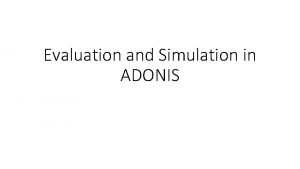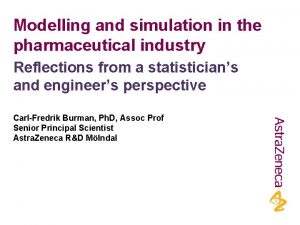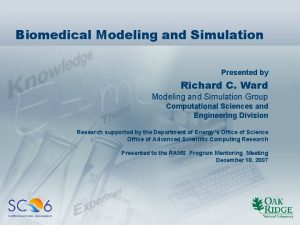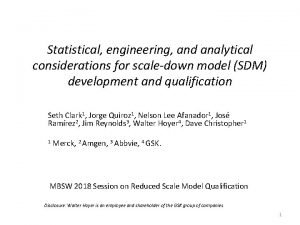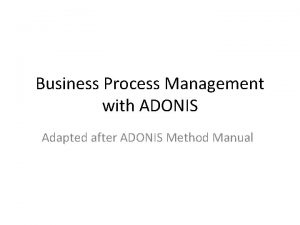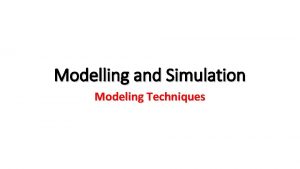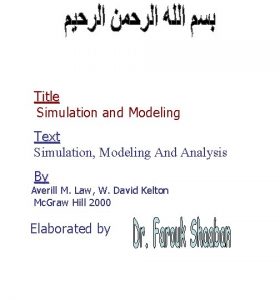Evaluation and Simulation in ADONIS So far Modeling







- Slides: 7

Evaluation and Simulation in ADONIS

So far… • Modeling (Company map, Business process diagram, Subprocess diagram, Working environment diagram…) • Variables and random generators -> mandatory for simulations • Import/export for saving and opening on other computers

Analysis: static evaluation of the models • Queries/Reports • Predefined queries • User defined via AQL • Analytical Evaluation – static evaluation of the business models, without working environments; it provides the average times and costs of the business

Simulation • • Path analysis – without Working Environment Capacity Analysis Workload Analysis (steady state) Workload Analysis (fixed time period) • Capacity analysis determines how many resources (performers and machines) are necessary for the execution of certain business process models based on how often these models are executed in a given period of time. Capacities with a value greater that 1 mean that the performer is overloaded. • Workload analysis determines the waiting and cycle times of business process models and activities based on a given quantity of resources and their availability. The input is an application model. It calculates the waiting times of the activities and thus also cycle times of the processes using the workloads of the performers and resources. If an activity is assigned to a performer or to a resource, while he is still busy executing a different task, waiting time is caused. • Steady state: a specific number of process runs are simulated, independent of the time period covered by the execution of the models. • Fixed time period: a previously determined time period is simulated, independent of how many models are executed within this period.

Path analysis • “How many possible paths exist in my process? ” • “How likely are they? ” • “What is the default path and can it be improved? • “Which path has the longest cycle time, the longest processing time? ” • “Where is the critical path? ”

Capacity analysis • “What are the manpower and resource requirements for the simulated processes? ” • “What are the fixed and variable costs of activities? ” • “How much will my processes cost on average? ” • “Which activities are most expensive? ”

Workload analysis • “How can I optimally use my employees and resources? ” • “Where do resource bottlenecks occur? ” • “Which waiting times are caused by bottlenecks and how do they affect the process? ” • “What about my resource utilisation? ”
